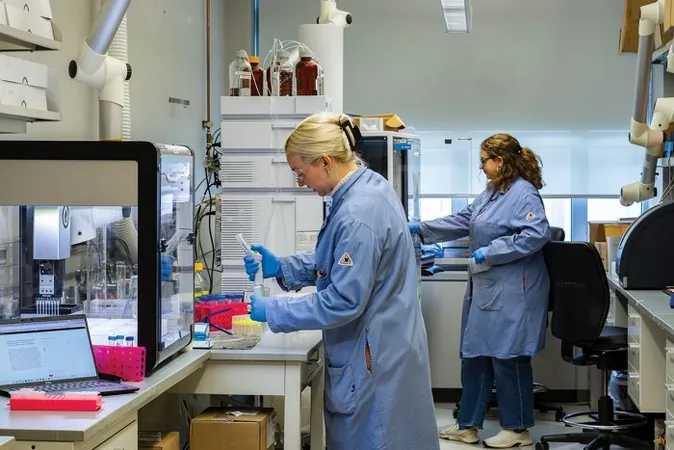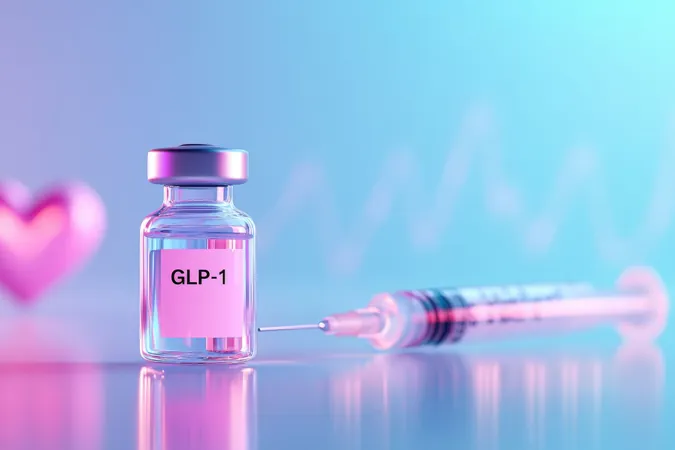
Breakthrough Matchmaking App Revolutionizes Biocatalysis for Chemists!
2025-03-27
Author: Nur
In an exciting development for the world of organic chemistry, researchers have unveiled an innovative web app named Catnip, designed to streamline the complex process of matching enzymes with molecules for biocatalysis. This groundbreaking tool addresses a long-standing challenge in the field: enzymes, while highly effective at constructing intricate molecules in an environmentally friendly manner, tend to be choosy about the substrates they work with. Finding the ideal biocatalyst often requires sifting through extensive libraries of enzymes, a task that can be both time-consuming and frustrating for chemists.
The brains behind Catnip are researchers from the University of Michigan–Ann Arbor and Carnegie Mellon University, led by biocatalysis expert Alison Narayan and machine-learning specialist Gabe Gomes. Their collaboration aims to transform the way chemists approach enzyme selection, offering a predictive model that pairs enzymes and target molecules effectively.
Presenting their research at the American Chemical Society Spring 2025 meeting, Narayan's team showcased how they tested 314 diverse α-ketoglutarate-dependent nonheme iron enzymes against over 100 small organic molecules. This rigorous high-throughput experimentation yielded impressive results, with nearly one-third of the combinations proving successful. The team discovered 215 new enzymatic reactions, mostly related to hydroxylation and elimination processes, significantly enriching the catalog of known reactions in this enzyme category.
The true innovation lies in Catnip's ability to process screening data and make predictions. By integrating their new findings with 139 established reactions from existing literature, the researchers created a comprehensive map connecting enzyme properties to chemical characteristics. Catnip analyzes the chemical structure of a small organic molecule and generates a list of the ten most compatible enzymes, providing chemists with valuable leads for further experimentation.
Initial tests using Catnip on natural products and synthetic compounds yielded promising pathways for molecular modifications, showcasing its potential to expedite research in biochemistry. Feedback from the scientific community has been overwhelmingly positive, with industry professionals expressing keen interest in the application.
Looking ahead, Narayan and Gomes are not resting on their laurels. They are already exploring the development of a similar model for oxidative couplings utilizing cytochrome P450 enzymes, a more complex area of biocatalysis requiring two starting molecules. Additionally, a new reverse-search feature allows researchers to input enzyme sequences to identify compatible small molecules, further expanding the app's utility.
Kyle F. Biegasiewicz, a biocatalysis researcher at Emory University, heralds Catnip as “a perfect example of how emerging technologies can revolutionize routine chemical synthesis with enzymes.” He believes this platform is just the beginning of a transformative journey in the field.
With such promising advancements on the horizon, the future of organic synthesis could be dramatically redefined through the innovative application of technology, ultimately leading to more efficient and sustainable chemical processes. Stay tuned for more remarkable updates as Catnip continues to reshape the landscape of biocatalysis!





 Brasil (PT)
Brasil (PT)
 Canada (EN)
Canada (EN)
 Chile (ES)
Chile (ES)
 Česko (CS)
Česko (CS)
 대한민국 (KO)
대한민국 (KO)
 España (ES)
España (ES)
 France (FR)
France (FR)
 Hong Kong (EN)
Hong Kong (EN)
 Italia (IT)
Italia (IT)
 日本 (JA)
日本 (JA)
 Magyarország (HU)
Magyarország (HU)
 Norge (NO)
Norge (NO)
 Polska (PL)
Polska (PL)
 Schweiz (DE)
Schweiz (DE)
 Singapore (EN)
Singapore (EN)
 Sverige (SV)
Sverige (SV)
 Suomi (FI)
Suomi (FI)
 Türkiye (TR)
Türkiye (TR)
 الإمارات العربية المتحدة (AR)
الإمارات العربية المتحدة (AR)